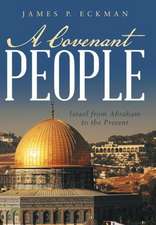Religion, Language and Community in the Roman Near East: Constantine to Muhammad: Schweich Lectures on Biblical Archaeology, cartea Vol. for 2010
Autor Fergus Millaren Limba Engleză Hardback – 19 dec 2013
Din seria Schweich Lectures on Biblical Archaeology
- 23%
 Preț: 166.17 lei
Preț: 166.17 lei - 19%
 Preț: 249.23 lei
Preț: 249.23 lei - 28%
 Preț: 470.75 lei
Preț: 470.75 lei - 13%
 Preț: 133.69 lei
Preț: 133.69 lei - 23%
 Preț: 165.54 lei
Preț: 165.54 lei - 18%
 Preț: 283.29 lei
Preț: 283.29 lei - 18%
 Preț: 283.86 lei
Preț: 283.86 lei - 31%
 Preț: 440.74 lei
Preț: 440.74 lei - 18%
 Preț: 321.15 lei
Preț: 321.15 lei - 18%
 Preț: 321.18 lei
Preț: 321.18 lei - 18%
 Preț: 283.48 lei
Preț: 283.48 lei - 31%
 Preț: 348.19 lei
Preț: 348.19 lei - 31%
 Preț: 379.45 lei
Preț: 379.45 lei - 34%
 Preț: 507.68 lei
Preț: 507.68 lei - 23%
 Preț: 166.40 lei
Preț: 166.40 lei
Preț: 320.90 lei
Preț vechi: 391.70 lei
-18% Nou
Puncte Express: 481
Preț estimativ în valută:
61.41€ • 63.75$ • 51.21£
61.41€ • 63.75$ • 51.21£
Carte disponibilă
Livrare economică 18-24 februarie
Preluare comenzi: 021 569.72.76
Specificații
ISBN-13: 9780197265574
ISBN-10: 019726557X
Pagini: 150
Dimensiuni: 164 x 240 x 23 mm
Greutate: 0.47 kg
Editura: OUP OXFORD
Colecția OUP Oxford
Seria Schweich Lectures on Biblical Archaeology
Locul publicării:Oxford, United Kingdom
ISBN-10: 019726557X
Pagini: 150
Dimensiuni: 164 x 240 x 23 mm
Greutate: 0.47 kg
Editura: OUP OXFORD
Colecția OUP Oxford
Seria Schweich Lectures on Biblical Archaeology
Locul publicării:Oxford, United Kingdom
Recenzii
a consistent display of dazzling erudition. One can only wish to have been present when the lectures were delivered.
Notă biografică
Fellow of All Souls College, Oxford, 1958-64 Fellow and Tutor in Ancient History, The Queen's College, Oxford, 1964-76 Professor of Ancient History, University College London, 1976-84 Camden Professor of Ancient History, University of Oxford, 1984-2002 Leverhulme Emeritus Fellow, 2002-4 Sather Professor of Classical Literature, University of California, Berkeley, 2002-3 Fellow of the British Academy


















